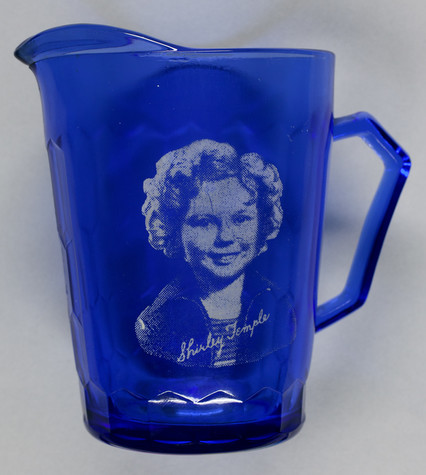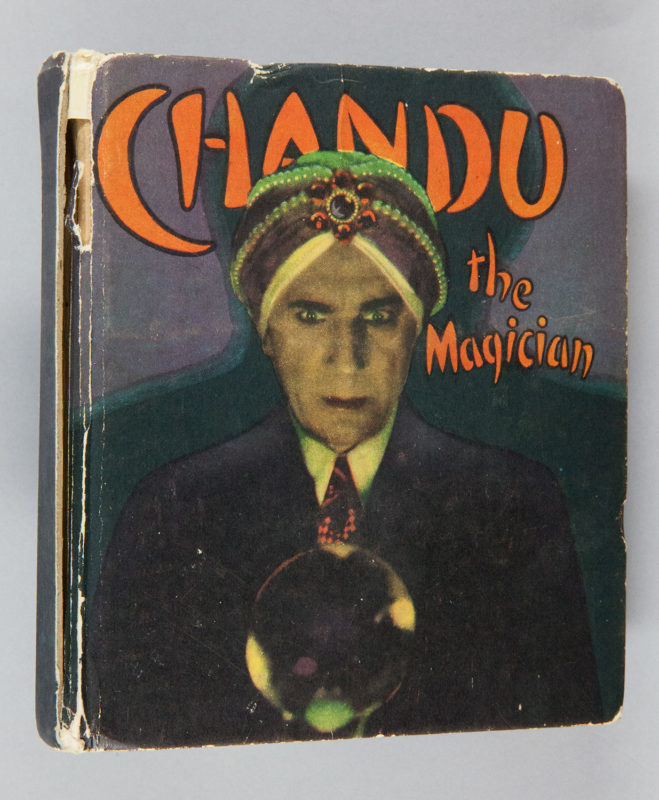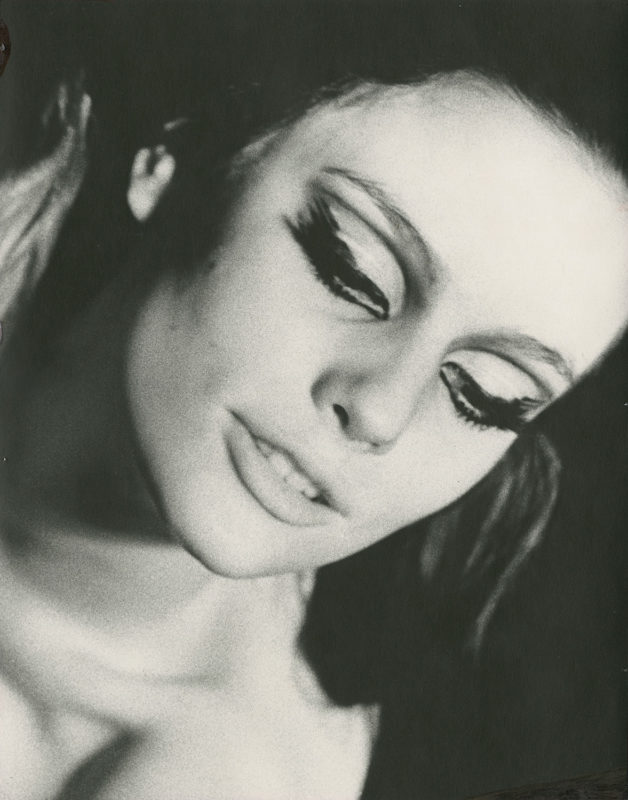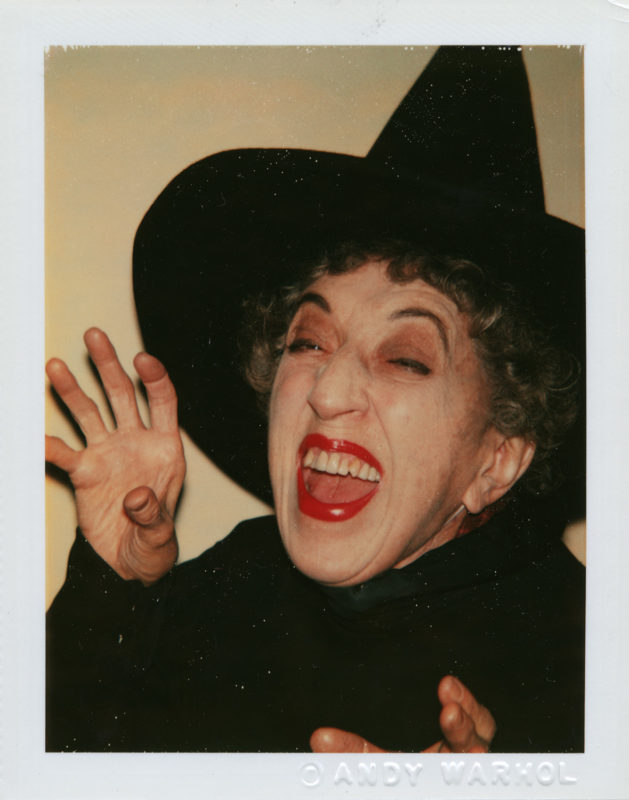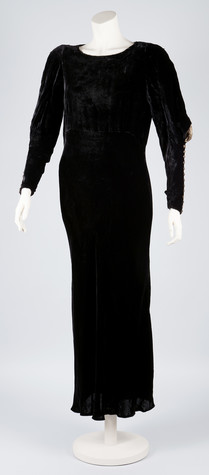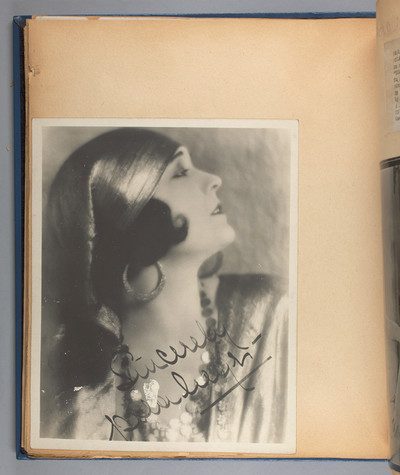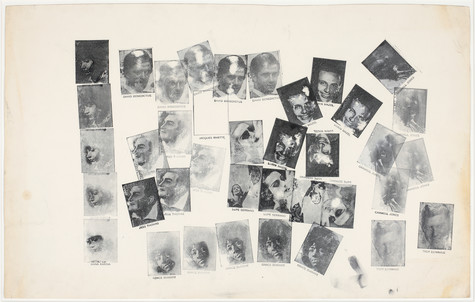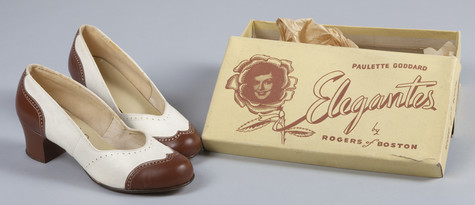Discover Andy Warhol’s fascination with Hollywood, fame, and stardom through the artist’s artworks and personal belongings.
Andy Warhol: Stars of the Silver Screen
June 16 – September 24, 2017
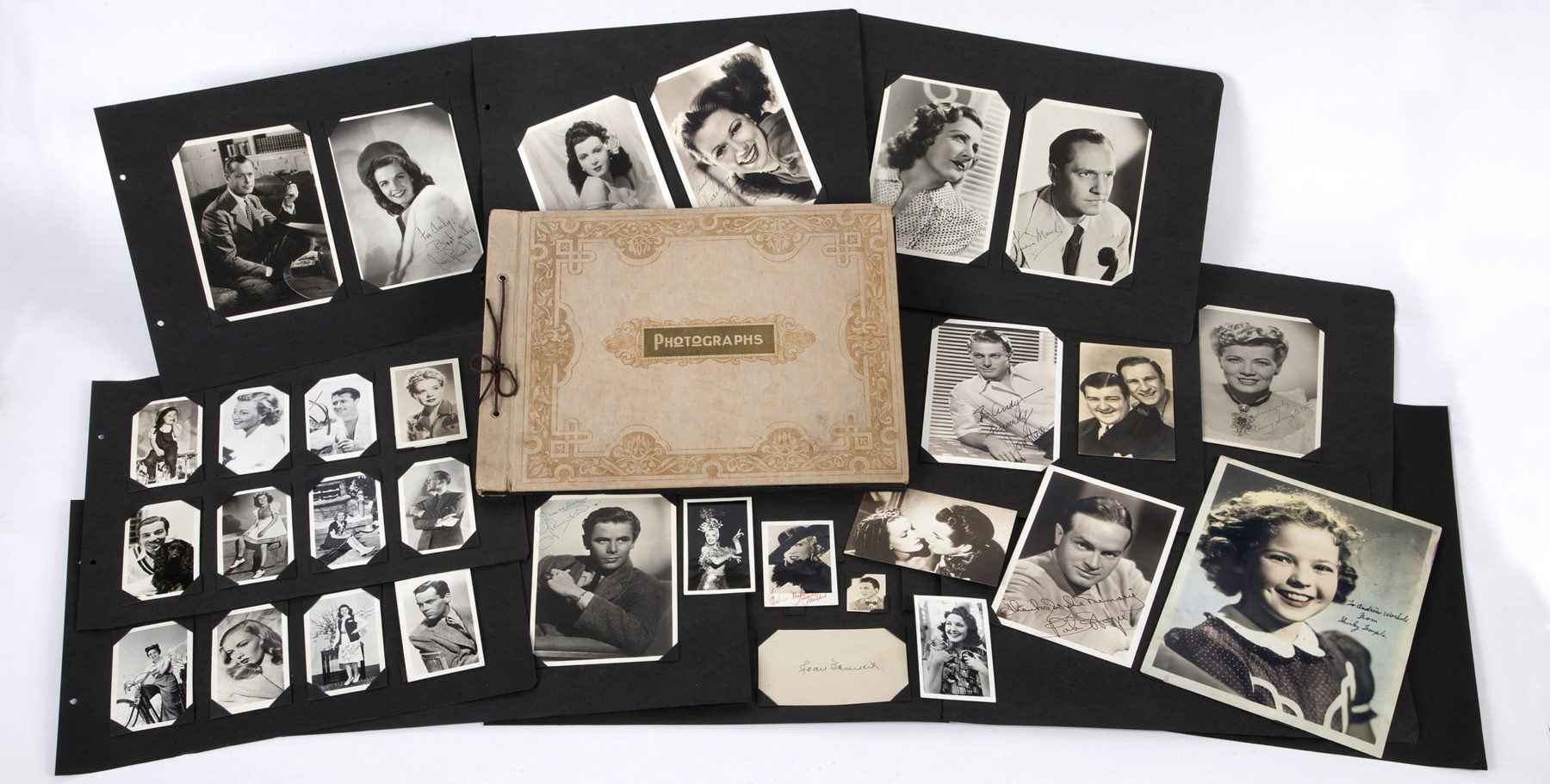
Andy Warhola's childhood movie star scrapbook, ca. 1938–42, The Andy Warhol Museum, Pittsburgh, founding collection, contribution The Andy Warhol Foundation for the Visual Arts, Inc.
Collecting Hollywood
Warhol was an obsessive collector. His earliest collection was probably the dozens of movie-star photographs he acquired as a child, and he continued to acquire images of celebrities past and present throughout his life. In the 1970s, when Hollywood studios were emptying their vaults, Warhol attended auctions to find photographic treasures. He purchased many photographs depicting celebrities past and present from the great collector John Kobal, and received others as gifts or discovered them at antique stores and flea markets.
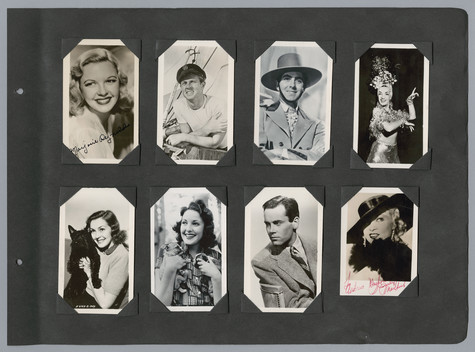
Page from Andy Warhola's childhood movie star scrapbook,
The Andy Warhol Museum, Pittsburgh; Founding Collection, Contribution The Andy Warhol Foundation for the Visual Arts, Inc.
T689.1
Star Scrapbook
Warhol’s desire to “look at the stars” was ignited while attending his neighborhood cinemas with his brothers in gritty, industrial 1930s Pittsburgh. Born to a poor but close-knit Byzantine Catholic family, young Andy Warhol absorbed images of both the saintly icons on the altar of his local church and the glamorous stars he saw in the movies at his neighborhood cinema. Both would influence his life and art. The photo album Warhol created as a boy remained a treasured possession of his for his entire life.
Glamour and Gossip
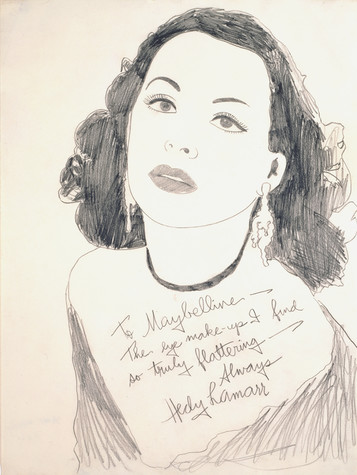
Andy Warhol, Hedy Lamarr, 1962
The Andy Warhol Museum, Pittsburgh; Founding Collection, Contribution Dia Center for the Arts
© The Andy Warhol Foundation for the Visual Arts, Inc.
1997.1.16
Hollywood has been a subject in Warhol’s artwork since early in his career. Warhol began using images of Hollywood icons in the 1950s. During the early 1960s, he painted personalities whose faces were as recognizable as everyday consumer products. Selecting source material from his growing photo collection, Warhol created works glorifying teen idols such as Troy Donahue, as well as more established movie stars like Marilyn Monroe and Elizabeth Taylor. Several of his films were subversive dramatizations of Hollywood scandals. Later in his career, Warhol revisited celebrity subjects for commissioned portraits, print series, and magazine illustrations.
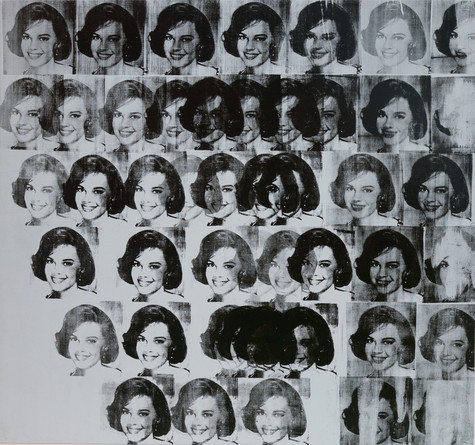
Andy Warhol, Natalie, 1962
The Andy Warhol Museum, Pittsburgh; Founding Collection, Contribution The Andy Warhol Foundation for the Visual Arts, Inc.
© The Andy Warhol Foundation for the Visual Arts, Inc.
1998.1.53
Teen Idols
In the early 1960s, Warhol made repeated images of movie stars using rubber stamps. Dissatisfied with the results and wanting “something stronger that gave more of an assembly-line effect,” he employed his newest discovery, the photographic silkscreen process. He used this technique to print multiple images of popular teen idols Troy Donahue, Warren Beatty, Natalie Wood, and Tuesday Weld onto canvas. He treated his subjects no differently than consumer objects: both advertise products currently in fashion but perpetually at risk of obsolescence.
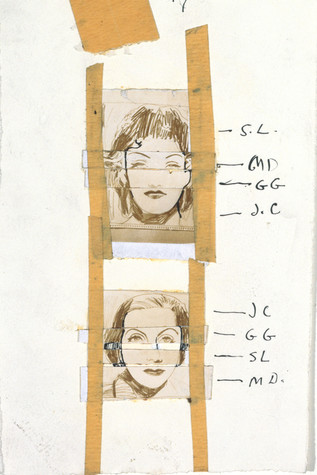
Andy Warhol, Female Movie Star Composite, ca. 1962
The Andy Warhol Museum, Pittsburgh; Founding Collection, Contribution The Andy Warhol Foundation for the Visual Arts, Inc.
© The Andy Warhol Foundation for the Visual Arts, Inc.
1998.1.2282
Female Movie Star Composite
Sophia Loren’s hairline, Marlene Dietrich’s eyes, Greta Garbo’s nose, Joan Crawford’s lips: Warhol created collages that combine the individual facial features of stars in what seems an effort to piece together the ideal beauty. Warhol was not only drawn to the world of Hollywood; he was also fascinated by the transformation that lay behind the scenes, often exploring this in his life and art. Warhol’s movie-star collages from the early 1960s demonstrate his idealistic belief in the possibilities of personal transformation.
Celebrity Magnet
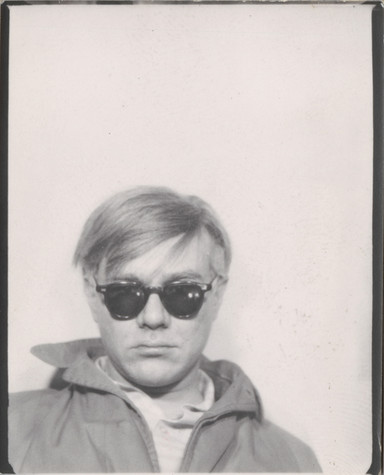
Andy Warhol, Self-Portrait, 1963
The Andy Warhol Museum, Pittsburgh; Founding Collection, Contribution The Andy Warhol Foundation for the Visual Arts, Inc.
© The Andy Warhol Foundation for the Visual Arts, Inc.
TC21.73.192
Although shy, Warhol was infatuated with fame, and was a deeply social person who enthusiastically engaged with the people around him. He unfailingly attended parties and cultural events, where he could circulate with both luminaries and the public. Wearing Ray-Bans and a black leather jacket, Warhol cut a stylish image of New York underground cool in magazines and news stories. In the 1970s, Warhol’s nightly forays to the legendary nightclub Studio 54 cemented his celebrity aura and provided a flow of wealthy clients for his flourishing business of commissioned portraits. Here, he traded in his leather jacket for a tux, and was seen with everyone from Liza Minnelli to the newest starlets.
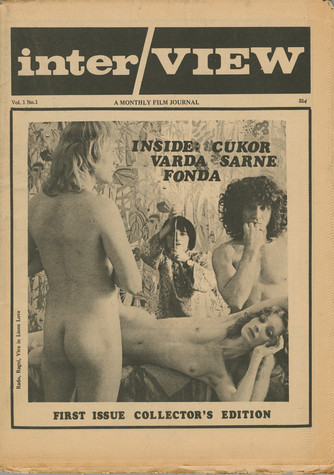
Interview - Vol. 1, no. 1 (1969), 1969
The Andy Warhol Museum, Pittsburgh; Founding Collection, Contribution The Andy Warhol Foundation for the Visual Arts, Inc.
© Brant Publications, Inc.
1998.3.6318.1
Interview Magazine
Warhol is said to have started Interview magazine in 1969 to receive more invitations to movie screenings. Initially titled inter/VIEW: A Monthly Film Journal, it was filled with film reviews, discussions, and tributes to glamorous former stars, replete with stills from classic cinema. Interview’s focus later expanded to embrace other aspects of popular culture, including fashion, art, music, television, gossip, and celebrity nightlife. Asked who read the publication, Warhol replied, “Our friends. And whoever is on the cover.” Richard Bernstein designed nearly all of the magazine’s covers between 1972 until 1989, colorfully airbrushing photographs of each month’s featured star.
The Artist as Star
Beginning with self-portraits he created in college, Warhol made his own image one of the primary motifs of his artistic career. In various styles of dress, wigs, and poses, Warhol modeled hundreds of times for his own and others’ photographs. Creating “Andy Warhol” as an image, icon, and brand was in some ways Warhol’s ultimate work of art.
Superstars
When Warhol began making his own films in 1963, he gathered his own company of regular players. These performers were not professional actors but charismatic personalities who gravitated to the artist’s circle. Warhol dubbed them “Superstars” as a nod to the Hollywood star system. Unlike the action-packed plots of traditional cinema, the adventures of Warhol’s Superstars were the activities of daily life—chatting with friends, lounging in bed, cutting hair, getting dressed, going out. The allure of this hip, alternative world contributed to Warhol’s growing fame.
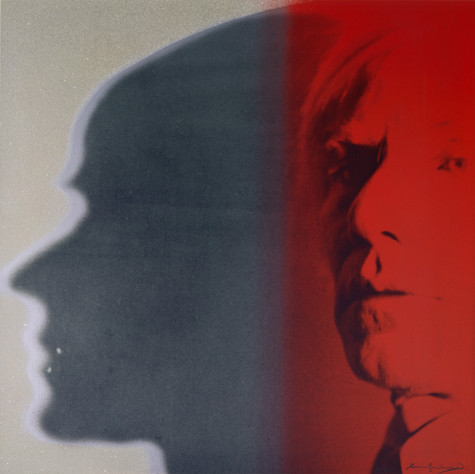
Andy Warhol, Myths: The Shadow, 1981
The Andy Warhol Museum, Pittsburgh; Founding Collection, Contribution The Andy Warhol Foundation for the Visual Arts, Inc.
© The Andy Warhol Foundation for the Visual Arts, Inc.
1998.1.2452.10
Myths
For his Myths print series (1981), he selected ten American popular-culture icons, including Greta Garbo as “The Star” and Margaret Hamilton of The Wizard of Oz as “The Witch.” The profile he chose for himself was “The Shadow,” referencing the 1930s radio program whose sinister hero (voiced by Orson Welles) spooked listeners.
I made my earliest films using, for several hours, just one actor on the screen doing the same thing…People usually just go to the movies to see only the star, to eat him up, so here at last is a chance to look only at the star for a long as you like.



